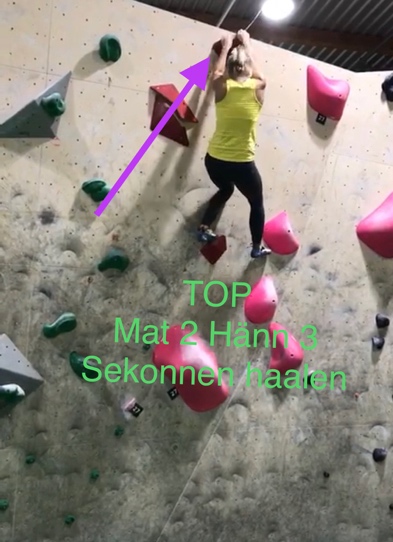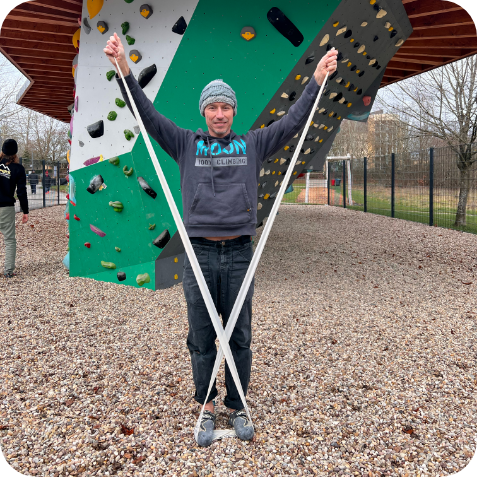
High load for muscles, Ligaments and tendons!
Before you start warm up in suitable areas.

If necessary spot.
Do not stand in the direct fall area.
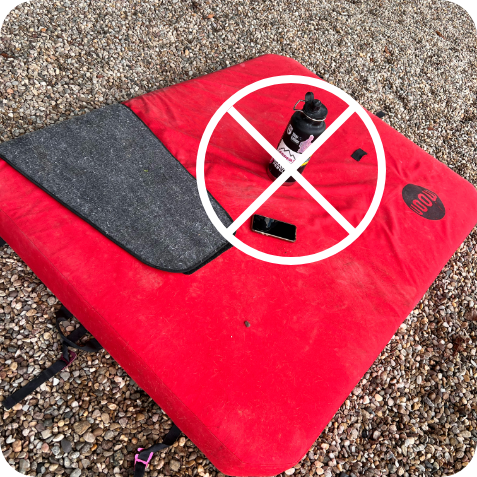
Don’t stay under the boulders.
Don’t boulder too close together or on top of each other.
Avoid collisions.!

Safe landing before climbing height.
Land and roll with your feet together if possible.
Use down climb holds.
Climb down instead of jumping off.
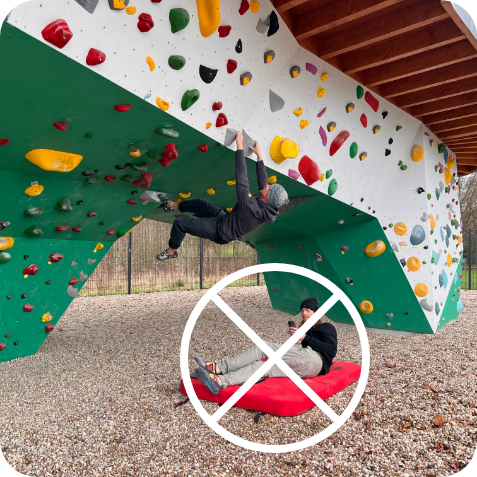
Be considerate of your surroundings.
Respect duty of supervision.
Bouldering is a form of free climbing that is performed on small rock formations or artificial rock walls without the use of ropes or harnesses. Wikipedia
How to start a boulder?
For a proper start on a bouldering problem, the climber has hands and feet on the marked start holds, and no part of the body is in contact with the ground. In a valid finish, both hands are in contact with the finish hold. The climber must be in control of the position and keep it for 3 seconds. Where and how the hands and feet are actually positioned on the start holds is up to the climber. Usually, a boulder problem uses all the way up the same color of holds. Before you start it’s helpful to be sure about the way, try to check out all the holds by watching. You are not allowed to touch them before you start, during competition.
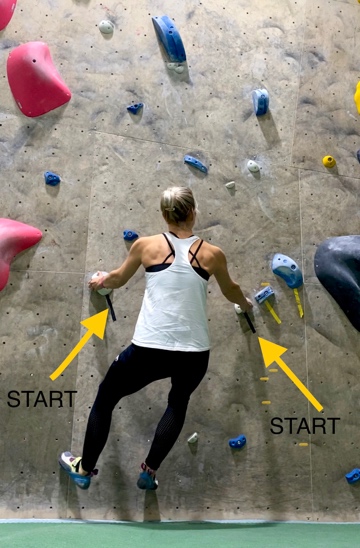
What is a start hold? In competition, the starting holds will be marked with “Start” or with tape of a different color than the rest of the holds on that problem. Some gyms will mark the start holds with a taped “V” that points towards the hold(s), or have a tape triangle next to the hold. There can be one to four starting holds. A piece of tape that is used to mark a hold is called a flash. If there is only one start hold and it is marked with four flashes, the starting position would be an all-points start, where hands and feet are all placed on that one hold. When there is only one starting handhold, it will be marked with two pieces of tape instead of just one. Both hands must be placed on that one hold.
In rare instances, when a precise starting position is required, the holds may be labelled as right and left. In the rare instance where no starting footholds are indicated, the feet can be placed on any of that problem’s footholds.
